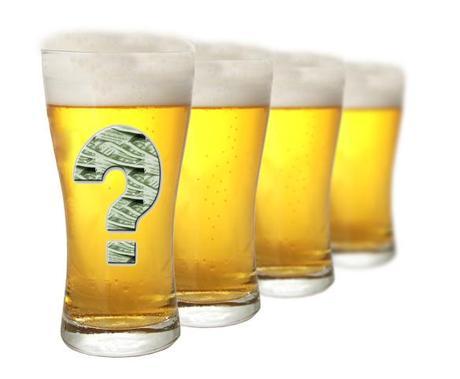 No matter what kind of shenanigans our youth puts us through - cheeky and fun or cruel and tragic - the fact of the matter is we grow up.
No matter what kind of shenanigans our youth puts us through - cheeky and fun or cruel and tragic - the fact of the matter is we grow up.
We age. We learn. We mature.
This is a lesson that is perhaps most important when it comes to a love and appreciation for something like alcohol, which for many can teeter on the edge of gleeful passion and problematic obsession, but hopefully never tumble into addiction.
Our youthful memories of beer-soaked times with friends are quaint in adulthood, if only for their near uniformity. That time we managed to get our hands on a 12-pack of [CRAP BEER] and sneaked to the [DOCK/WOODS/FRIEND'S BASEMENT] to polish it off amongst our little group. In the grand scheme of life, it seems harmless and leaves us with stories to bond over years later.
But what if someone gets stuck in this scenario? What if the folly of youth turns into irresponsible drinking? Does that impact his or her choice to transition into a more responsible drinker later on? What does this mean for interest and consumption of craft beer, too?
As it may turn out, these questions and answers may come from the same place.
I recently came across this report from NPR, discussing studies focused on drinking habits of college students. Specifically, the NPR story noted that the "largest single factor" of binge drinking among college students was price. The cheaper the beer, the more students would drink.
Which got me to thinking: If cost drives the initial exposure to beer and binge drinking, what is it that changes a young drinker's mind? More importantly, how does this fit in with the greater segment of Millennials, the biggest consumer base for craft beer?
To start, let's reinforce the idea of who in the Millennial demographic binges, which is presumably skewed by all those rowdy college students. Here's how we can assume that much:
- 28.2 percent of 18 to 24-year-olds binge drink.
- They drink 9.3 drinks per average session.
- They average 4.2 binge sessions each month.
- 90 percent of all beer, wine, and liquor consumed in the 18 to 24 age group goes down during binge sessions.
So while the percentage of bingers may seem high, so are the binge sessions, which on average happen every week - perhaps on the weekend. The biggest red flag is the fact that 90 percent of beer, wine and liquor consumed by the age group is drunk during binge sessions, showing that they are simply drinking to get drunk.
Our profile is then an 18 to 24-year old drinking every week, but consuming roughly all their alcohol in weekly sessions. If they're buying large quantities of alcohol to have nine drinks, it coincides with the more cost-effective choices mentioned in the study.
"The largest single factor that predicted the uptick of binge drinking for freshmen coming to college was the price they paid for a drink," Harvard epidemiologist Elissa Weitzman told NPR.
This itself is interesting, as the U.S. Department of Health and Human Services have reported that the latest figures of underage alcohol use shows greater restraint among teens:
- Current drinking among 12 to 17 year-olds has declined 34 percent since 2002, to a record-low level.
- Binge drinking among 12 to 17 year-olds has declined 42 percent since 2002, to a record-low level.
- Heavy drinking among 12 to 17 year-olds has declined 52 percent since 2002, to a record-low level.
Very broadly speaking, it seems that entering college and cost are the biggest reasons for young drinkers to binge, which (stereotypically) should come as no surprise. Many college campus atmospheres offer plenty of opportunities to drink, along with social pressures and the want of uniformity, which itself is a common trait among enclosed social groups like those at a college.
I realize this information fits easily into our expectations of who a young drinker (or binger) may be, but it was also important for me to confirm some of the bigger issues that shape the topic.
A lot of this comes back to highlighting the importance of Millennials as craft beer consumers, especially because as the largest demographic of this beer segment, I find the shift in drinking behavior and expectations of what is preferred to drink rather interesting. While we start here with lots of questions, there are (hopefully) answers to those coming up.
So, as I leave you hanging, I hope to explore why these changes occur in my next post.
But in the meantime, chime in: how have your drinking behaviors or expectations changed over the years?
More in this series:+Bryan Roth
"Don't drink to get drunk. Drink to enjoy life." - Jack Kerouac

